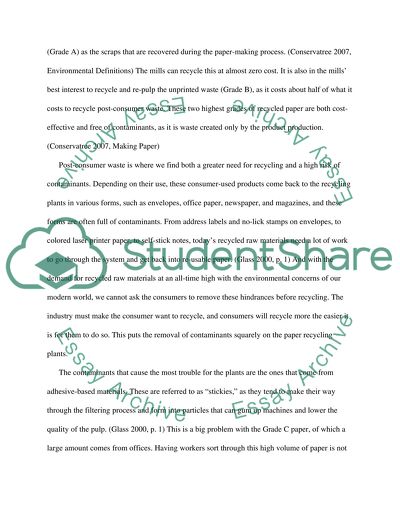Cite this document
(“Contaminants in Recycled Paper Essay Example | Topics and Well Written Essays - 1500 words”, n.d.)
Contaminants in Recycled Paper Essay Example | Topics and Well Written Essays - 1500 words. Retrieved from https://studentshare.org/miscellaneous/1527062-contaminants-in-recycled-paper
Contaminants in Recycled Paper Essay Example | Topics and Well Written Essays - 1500 words. Retrieved from https://studentshare.org/miscellaneous/1527062-contaminants-in-recycled-paper
(Contaminants in Recycled Paper Essay Example | Topics and Well Written Essays - 1500 Words)
Contaminants in Recycled Paper Essay Example | Topics and Well Written Essays - 1500 Words. https://studentshare.org/miscellaneous/1527062-contaminants-in-recycled-paper.
Contaminants in Recycled Paper Essay Example | Topics and Well Written Essays - 1500 Words. https://studentshare.org/miscellaneous/1527062-contaminants-in-recycled-paper.
“Contaminants in Recycled Paper Essay Example | Topics and Well Written Essays - 1500 Words”, n.d. https://studentshare.org/miscellaneous/1527062-contaminants-in-recycled-paper.


